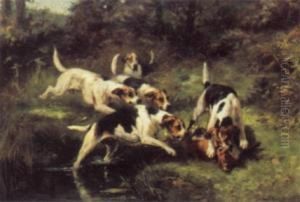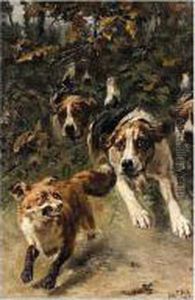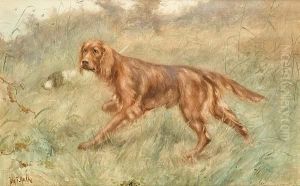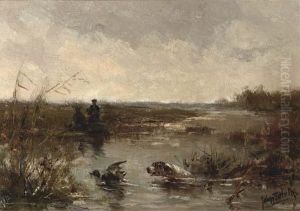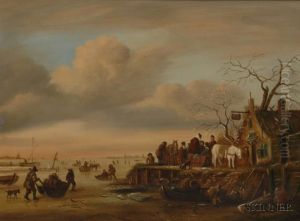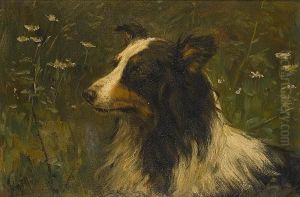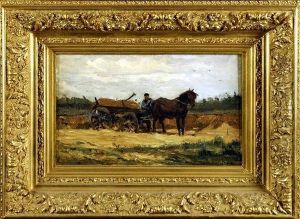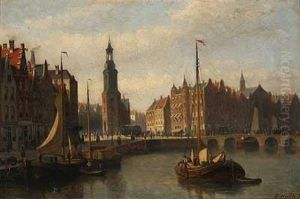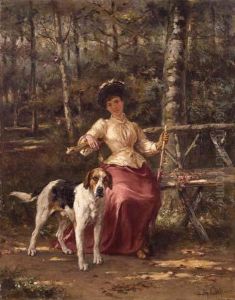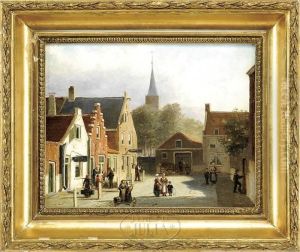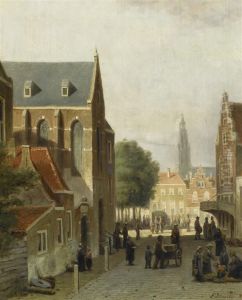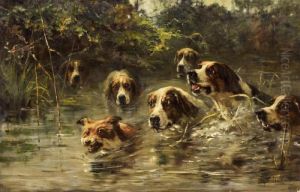John Frederick Ii Hulk Paintings
John Frederick Hulk II, often known simply as John F. Hulk, was an English-Dutch painter born in 1855 in London. He descended from a line of artists; his father, John Frederick Hulk Sr., was a well-known marine painter, which greatly influenced his own artistic path. Hulk II's work was primarily focused on landscapes, marine scenes, and animals, particularly horses and dogs, which he rendered with a great deal of attention to detail and a keen eye for capturing the essence of his subjects.
Hulk's early life was immersed in the arts, and he received his initial training from his father. This familial apprenticeship equipped him with a strong foundation in the techniques of painting, particularly in the realm of marine art, which would remain a recurrent theme throughout his career.
Despite his English birth, much of Hulk's artistic career unfolded in the Netherlands, where he spent a significant portion of his life. He was part of the late 19th-century movement of artists who were drawn to the Dutch landscape and light, which they found particularly conducive to painting en plein air—a practice that became increasingly popular during that period.
Throughout his career, Hulk exhibited a consistent dedication to realism, with a particular emphasis on achieving accuracy in the portrayal of animals. His works were marked by a meticulous approach to detail and often exuded a tranquil, pastoral quality. He was skilled at capturing the varying textures of fur and the muscularity of animal forms, as well as the interplay of light and shadow in his landscapes and seascapes.
John Frederick Hulk II's contribution to the art world was recognized in his time, and his works were collected by art enthusiasts in both England and the Netherlands. He continued to paint and exhibit his works until his death in 1913. Today, his paintings can be found in various art collections and continue to be appreciated for their technical skill and serene beauty.
